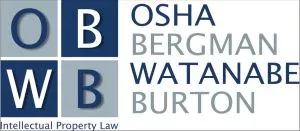The interplay between the legal doctrines of inherency and obviousness was recently considered by the U.S. Court of Appeals for the Federal Circuit (Federal Circuit or CAFC) in Cytiva BioProcess R&D AB vs. JSR Corp.1 In particular, the CAFC discussed that if a claimed property is considered inherent in an otherwise obvious claim, then there is no question of a reasonable expectation of success.
The challenged patents in the present case are part of the same family and share substantively similar specifications. Each of the challenged patents relate to affinity chromatography matrices that include a ligand made from Protein A ("SPA") found in a bacterium and processes for isolating target compounds with those chromatography matrices. The matrix is generally a stationary phase of the column, and a fluid including a target antibody is then loaded and passed through the matrix, where the ligands on the matrix selectively bind (or "attach to") the target antibody while the impurities in the fluid do not.
Antibodies include different regions, including a Fab region (named as such for having an antigen binding fragment). In addition to a mutation in one of the domains of the SPA ligand required by the independent claims of each of the challenged patents (glycine residue modification to an alanine at position 29, or the "G29A" modification in Domain C), the dependent claims at issue also recite the ligand binding (or being capable of binding) "to the Fab part of an antibody."
The issue considered by the Federal Circuit was whether the recited property of the ligand binding (or being capable of binding) to the Fab part of an antibody was an inherent property and how that impacted the patentability assessment. While the Patent Trial and Appeal Board (PTAB or the Board) concluded that the composition claims were obvious while at the same time concluding that JSR had not shown the process claims to be unpatentable, the CAFC found the PTAB's decision to be wrong.
However, before considering whether the recited property limitations were inherent, the CAFC considered two construction related questions. First, the CAFC evaluated whether the recited property limitation in the composition claims (reciting that the ligand is capable of binding to the Fab part of an antibody) should be treated the same as the limitation process claims (reciting that the ligand binds to the Fab part of an antibody). The CAFC found that the composition and process claims do not contain substantive distinction that is relevant to the appeal and that the differences in the ligand binding versus being capable of binding are immaterial to assessing the obviousness of the claims. The fact of "binding" was not disputed, and both parties appeared to argue the composition and process claims in the same manner. Thus, the composition claims and the process claims were treated the same in the CAFC's evaluation.
Second, the CAFC construed the phrase "Fab part of an antibody." When a Fab region is separated from the whole antibody, it is called "a Fab fragment." The patent specification describes that "a 'Fab binding ligand' is capable of binding to either full antibodies via Fab-binding; or to antibody fragments which includes the variable parts also known as Fab fragments." Additionally, both parties agreed that the "Fab part of an antibody" can refer to either the Fab portion of the full antibody or the Fab antibody fragment. Therefore, the CAFC concluded that "Fab part of an antibody" can refer to either a Fab part of a full antibody or a Fab fragment. In contrast, the Board required, when analyzing the process claims, that a person of ordinary skill in the art would need to be aware that the ligand binds to a Fab fragment.
Because the CAFC and the parties agreed that the claims are not limited to Fab fragments and instead also include the Fab part of the full antibody, the CAFC determined that the Board erred in requiring that JSR separately demonstrate that a person of ordinary skill would have a motivation or prior knowledge concerning Fab fragments to show obviousness of the process claims.
The CAFC then considered whether the claims were obvious with inherent property limitations. While inherency is a legal doctrine that most often arises in the context of anticipation, the Federal Circuit reiterated that "inherency may supply a missing claim limitation in an obvious analysis." The question before the CAFC was whether a claim limitation that merely recites an inherent property (here, a ligand binding to a Fab part of an antibody) of an otherwise obvious combination requires additional analysis to demonstrate that a person of ordinary skill would have a reasonable expectation of success.
JSR argued that the Fab binding recited in the process claims is a natural result of the Domain C G29A modification and that "[i]f a property of a composition is in fact inherent, there is no question of a reasonable expectation of success in achieving it," relying on a prior Federal Circuit decision.2 In that Hospira decision, the claim limitation recited the stability and activity of the composition after storage—an inherent property of the claimed composition. In contrast, Cytiva argued that protein engineering is a notoriously unpredictable art, that the binding was unexpected, and that "unexpected properties may cause what may appear to be an obvious composition to be nonobvious," relying on a different prior CAFC decision.3 However, the CAFC explained that the Honeywell decision cited by Cytiva dealt with composition claims that were directed to the combination of unstable components of the composition, which were disfavored in the art for the intended purposes in the claim. Thus, in Honeywell, the claims were directed to a composition that itself was not inherent, the combination of which had unexpected properties, such that one would not have been motivated to combine the two compounds in the first place.
The CAFC described Hospira and Honeywell as "important guideposts between claims which require knowledge of an inherent property to arrive at the claimed invention and claims which simply claim an inherent property or result." For instance, the CAFC cautioned that, when claims require prior knowledge of the inherent property, then a patent validity challenger would still have the burden to demonstrate a reasonable expectation of success to provide a motivation to combine multiple references. This is a different situation, according to the court, from simply claiming an inherent property in an otherwise obvious claim, as was the case with Cytiva's composition and process claims. As such, the CAFC disagreed with the Board's analysis and confirmed that consideration of reasonable expectation of success is unnecessary with claims in which the sole disputed limitation is an inherent property.
Importantly, the patent challenger must still meet its burden to demonstrate that the claimed limitation is indeed inherent, where a simple statement without sufficient evidence will not demonstrate invalidity or unpatentability. Importantly, the distinction between the two guideposts and the requirements under each as articulated by the Federal Circuit provides some clarity regarding the interplay between the doctrines of inherency and obviousness which can sometimes arise within the chemical and biological fields with respect to both composition and process claims.
Footnotes
1 122 F.4th 876 (Fed. Cir. 2024).
2 Hospira Inc. v. Fresenius Kabi USA, LLC, 946 F.3d 1322, 1332 (Fed. Cir. 2020).
3 Honeywell Int'l Inc. v. Mexichem Amanco Holding S.A. DE C.V., 865 F.3d 1348, 1355 (Fed. Cir. 2017).
The content of this article is intended to provide a general guide to the subject matter. Specialist advice should be sought about your specific circumstances.



